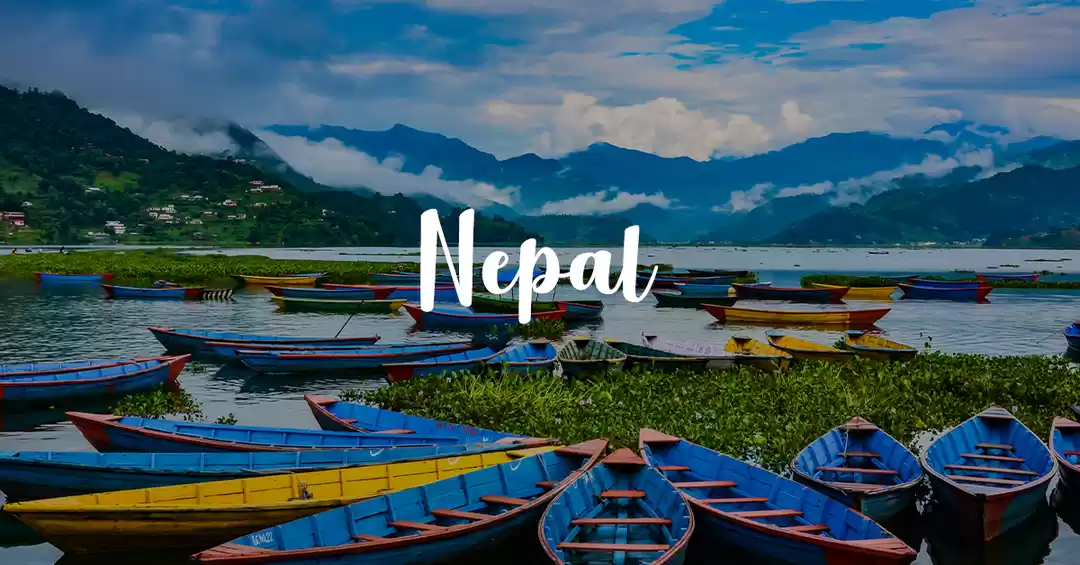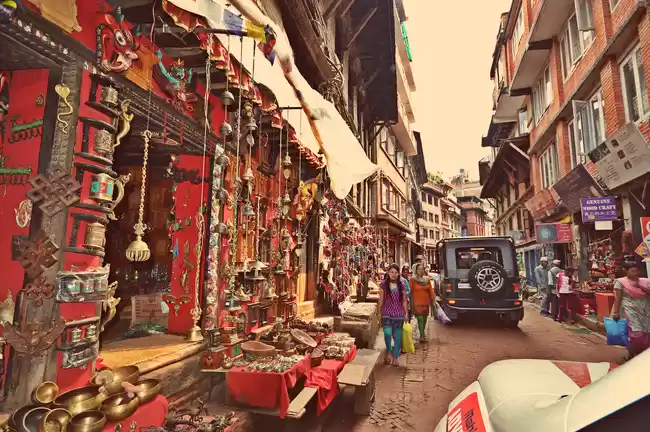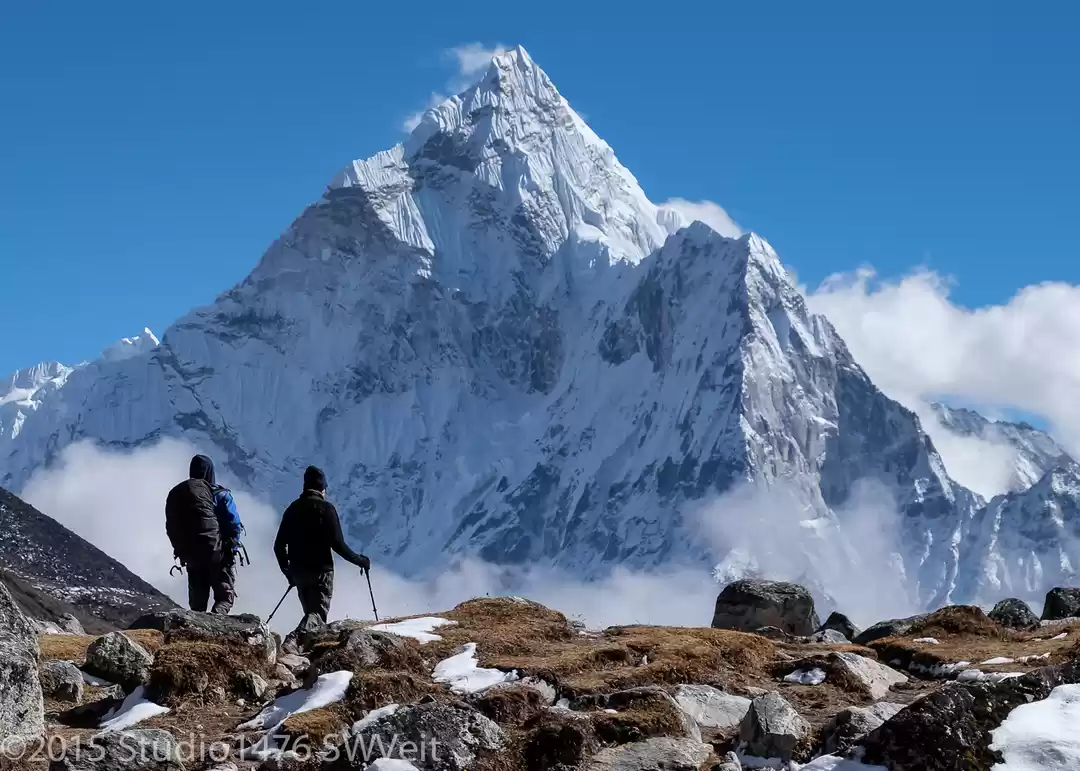While many aspire to conquer Mt. Everest or trek to its base camp, I harboured a different dream. The thought of reaching the summit or even the base camp didn't top my bucket list, despite having completed a couple of high-altitude treks. However, the allure of getting up close and personal with the magnificent Mt. Everest was undeniably irresistible.
While I was planning my trip to Nepal, I stumbled upon an incredible opportunity – the Everest Mountain Flight by Buddha Air. This extraordinary experience not only treats you to breathtaking vistas of the world's tallest peaks but also offers a unique perspective on Nepal's pristine landscapes and geographical features.
The Himalayas, with their sheer and unparalleled beauty, offer an experience like no other. I decided to embark on a 'once in a lifetime' adventure without much hesitation. I booked my tickets for the 'Everest Mountain Flight,' eager to explore what it had to offer.
What is the 'Everest Mountain Flight' all about & how much does it cost?
To my surprise, the cost of the tickets was quite reasonable. Priced at just 7000 INR (approximately + taxes) per person, this experience allowed me to soar above the awe-inspiring Himalayan landscape of Nepal. The flight offered breathtaking views of gorges, cliffs, and mountains that seemed to float amidst the white, ethereal clouds.
Not everyone is cut out for the challenging journey of climbing the mighty Himalayas, but we all deserve the opportunity to witness the remarkable beauty of these raw, untamed, and truly majestic mountains. Buddha Air operates the Everest Mountain Flight daily from Kathmandu, typically departing early in the morning, around 6:00 AM when the Himalayan vistas are at their best. The flight duration ranges from 50 minutes to an hour and treats passengers to stunning views of 20 of the highest peaks to the East of Nepal.

The journey begins with a close-up look at the Langtang Lirung Peak, which is the nearest peak to Kathmandu. It then progresses eastward, providing views of Sagar Matha, also known as Mount Everest, and finally reaching the Chamlang Peak. The flight then gracefully turns, giving passengers a second opportunity to savour the panoramic views before heading back to Kathmandu.
The entire experience felt like the fastest and undoubtedly the most unforgettable hour of my life.
An Unforgettable Experience!
During our flight, we were thoughtfully provided with a 'Himalayan Peaks' map by our attentive flight attendant. This map was a treasure trove of information about the various peaks we were going to encounter on our mountain flight. Additionally, our flight attendants took the time to offer informative briefings, moving through the cabin to point out the visible mountains.
I was truly mesmerized by the sight of these colossal mountains, each towering above 8000 meters. Among them were awe-inspiring peaks such as Mt. Gauri Shankar, Mt. Cho-Oyu, Mt. Shisha Pangma, Mt. Pumori, Mt. Nuptse, Mt. Ama Dablam, the legendary Mt. Everest, and the majestic Mt. Lhotse, to name just a few. The icing on the cake was that every passenger was guaranteed a window seat for this incredible journey!

To quote Frank Smythe, “There is something about the Himalayas not possessed by the Alps, something unseen and unknown, a charm that pervades every hour spent among them, a mystery intriguing and disturbing. Confronted by them, a man loses his grasp of ordinary things, perceiving himself as immortal, an entity capable of outdistancing all changes, all decay, all life, all death.”
Small, that’s how I felt.
In front of this wonderful display of nature, I felt so tiny & unimportant, and yet so wonderfully free!
I truly wished that the journey lasted for a little longer, but as they say, all good things come to an end. As we returned back to the chaos of Kathmandu, the views of the snow-capped mountains and the clouds kissing them kept lingering on my mind, with a feeling of calmness and tranquillity, which lasted for some time.
Here are a few things to know before you book your 'Everest Mountain Flight':
1. You Will See Some Of The Tallest Mountains On Earth - Including Mt Everest
I couldn't resist the opportunity to come face to face with some of the tallest mountains on our planet, and the flight experience certainly did not disappoint.
Mount Everest: Soaring to a staggering height of 8,848 meters (29,029 feet), Mount Everest claims the title of the world's tallest mountain. It's situated in the Mahalangur Himal sub-range of the Himalayas and is affectionately known as Sagarmatha in Nepali and Chomolungma, the "Goddess Mother of the World," in Tibetan.
Lhotse: As the fourth highest mountain globally, Lhotse reaches a peak elevation of 8,516 meters (27,940 feet). It straddles the border between Tibet and the Nepalese Khumbu region.
Nuptse: Nuptse, a part of the Everest massif, stands proudly at 7,861 meters (25,791 feet) and graces the Khumbu region of Nepal.
Ama Dablam: Renowned for its distinctive, almost iconic shape, Ama Dablam is a mountain located in the eastern Himalayas of Nepal. It stands at 6,812 meters (22,349 feet) and is often likened to the "Matterhorn of the Himalayas."
Cho Oyu: Situated on the border between Tibet (China) and Nepal, Cho Oyu claims the sixth-highest mountain title worldwide, with a height of 8,188 meters (26,864 feet). It has become a popular choice for mountaineering expeditions now that Chinese permits are once again available.
Makalu: As the fifth-highest mountain in the world, Makalu reaches a staggering height of 8,485 meters (27,838 feet). It's located on the border between Nepal and Tibet, known for its steep slopes and challenging climbing routes.
2. The Flights Take Off In The Early Morning
The flight takes off at 6:30 am, so depending on your location within Kathmandu, you'll need to commence your journey by 4:30 am to ensure you arrive at the airport punctually.
3. Flights Can Be Delayed Or Cancelled In Bad Weather Conditions
On that note, one of the most crucial aspects to be aware of regarding Everest Mountain Flights is that flights can be cancelled in unfavourable weather conditions.
Indeed, adverse weather, often characterized by dense cloud cover, is a frequent phenomenon in the high Himalayan region. In the event of a flight cancellation, passengers typically have the option to either receive a refund or have their flight rescheduled with tickets for the next available date.
4. You'll Fly on A Small Jet Plane!
...where everyone gets a window seat.
5. The Best Time To Fly Is April - May And September - October
In these months, the Himalayan region typically experiences more stable weather conditions, characterized by clear skies and excellent visibility. These conditions create the perfect setting for an ideal Mount Everest flight tour. However, I had the opportunity to experience it in July and was fortunate to have favourable weather during that time!
Think we missed out on something? Tell us about it in the comments below. Or write about it here on Tripoto and follow my adventures in Nepal, here.

































